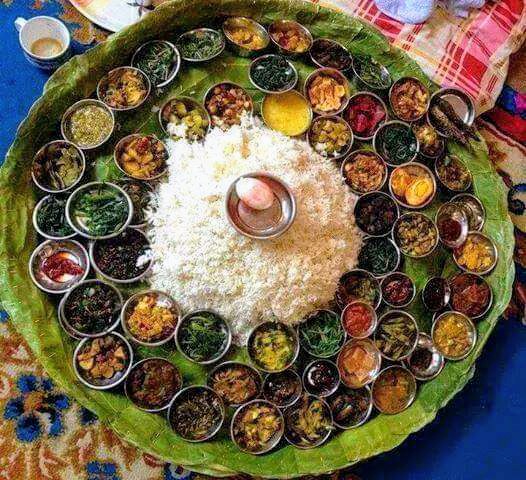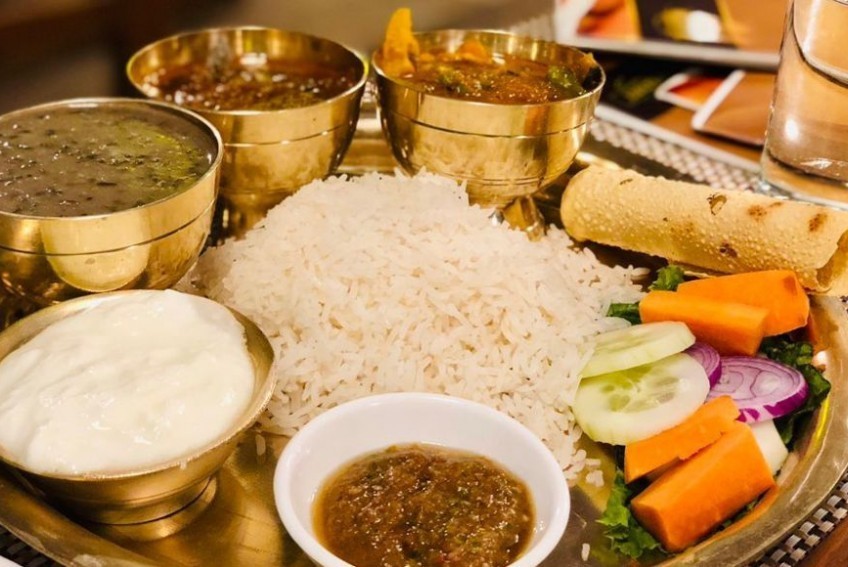Share this Article

Introduction: The Phantom Seasoning
High in the Himalayas, where the air thins and the rivers run wild with minerals, Nepalese cooks have perfected an ancient culinary magic—the art of seasoning food without visible salt. This is not some mystical trick, but a profound understanding of how the mountains themselves can flavor a dish. "Invisible salt" refers not to one ingredient, but to Nepal’s intricate web of mineral-rich salts, fermented foods, and sacred waters that impart salinity without a single grain of table salt in sight.
From the sulfurous depths of black salt mines to the bamboo-roasted crystals carried by Sherpa climbers, Nepal’s hidden salts are a testament to a cuisine that listens to the land.
The Four Guardians of Nepal’s Hidden Salt
Kala Namak: The Volcanic Whisperer
This jet-black salt, mined from the Himalayan foothills, is Nepal’s most notorious "invisible" seasoning. When crushed, it releases a pungent, sulfuric aroma reminiscent of hard-boiled eggs. Yet once dissolved into food, it vanishes—leaving behind only a deep umami richness.
- Where you’ll taste it: In chaats, bara (lentil pancakes), and achar (pickles)
- Why it’s special: Ayurveda reveres it for digestion; vegans use it to mimic egg flavor
Sendha Namak: The Fasting Salt
Harvested from ancient seabeds in Nepal’s Gandaki region, this unrefined pink crystal is the only salt permitted during Hindu fasting periods. Unlike industrial salt, it dissolves slowly, releasing minerals in a gradual symphony.
- Where you’ll taste it: In samay baji (Newari ritual platters) and vrat ko khana (fasting meals)
- Why it’s special: Rich in trace minerals like magnesium and potassium
Tama Noon: Bamboo’s Smoky Gift
A specialty of Nepal’s Tamang community, this salt is packed into green bamboo stalks and roasted over dung fires for three days. The result? A smoky, earthy seasoning that carries whispers of the forest.
- Where you’ll taste it: In thukpa (noodle soup) and gundruk (fermented greens)
- Why it’s special: Bamboo infuses the salt with natural silica, believed to strengthen bones
Dhunge Dhara: The Liquid Salt of Kathmandu
The stone water spouts of the Kathmandu Valley flow with water filtered through Himalayan mineral beds. For centuries, cooks have used this naturally saline water to boil rice and broths—seasoning dishes without adding a single grain of salt.
- Where you’ll taste it: In momo broth and kwati (sprouted bean soup)
- Why it’s special: UNESCO studies show it contains 22+ trace minerals
The Science of Invisible Salt
Why does this "hidden" salt taste so different? Modern science reveals:
- Fermentation as Nature’s Salt Factory
Dishes like gundruk (fermented mustard greens) and sinki (radish pickle) develop natural glutamates during fermentation, reducing the need for added salt. - Mineral Synergy
Himalayan salts contain potassium, magnesium, and iron, which enhance flavor perception at lower sodium levels. - Slow-Release Crystals
Unlike refined salt, Nepal’s traditional salts dissolve gradually, creating a longer-lasting taste experience.
A Culture Preserved in Salt
These salts are more than flavor—they are cultural codes:
- Newar Death Rituals → A pinch of kala namak is placed in the mouth of the deceased
- Sherpa Expeditions → Tama noon is carried to combat altitude sickness
- Tharu Healing → Black salt is used in protective amulets against evil spirits
Yet globalization threatens these traditions. Over 75% of Nepal’s kala namak is now exported for vegan cooking, while tama noon production has declined by 60% in a decade.
The Future of Invisible Salt
Innovators are fighting back:
- Chefs are reinventing dishes like salt-aged yak cheese and momocha (momo with a salt crystal center)
- Scientists study these salts for hypertension-friendly diets and space food preservation
- Activists lobby for protected status to prevent over-mining
But in a remote goth (herder’s hut), where a grandmother stirs a pot of thukpa with a bamboo salt stick, the old ways endure. The broth tastes of the earth itself—seasoned by the unseen hand of the Himalayas.
Categories:
Food & Drink
Tags:
Salt
,
salt mines







